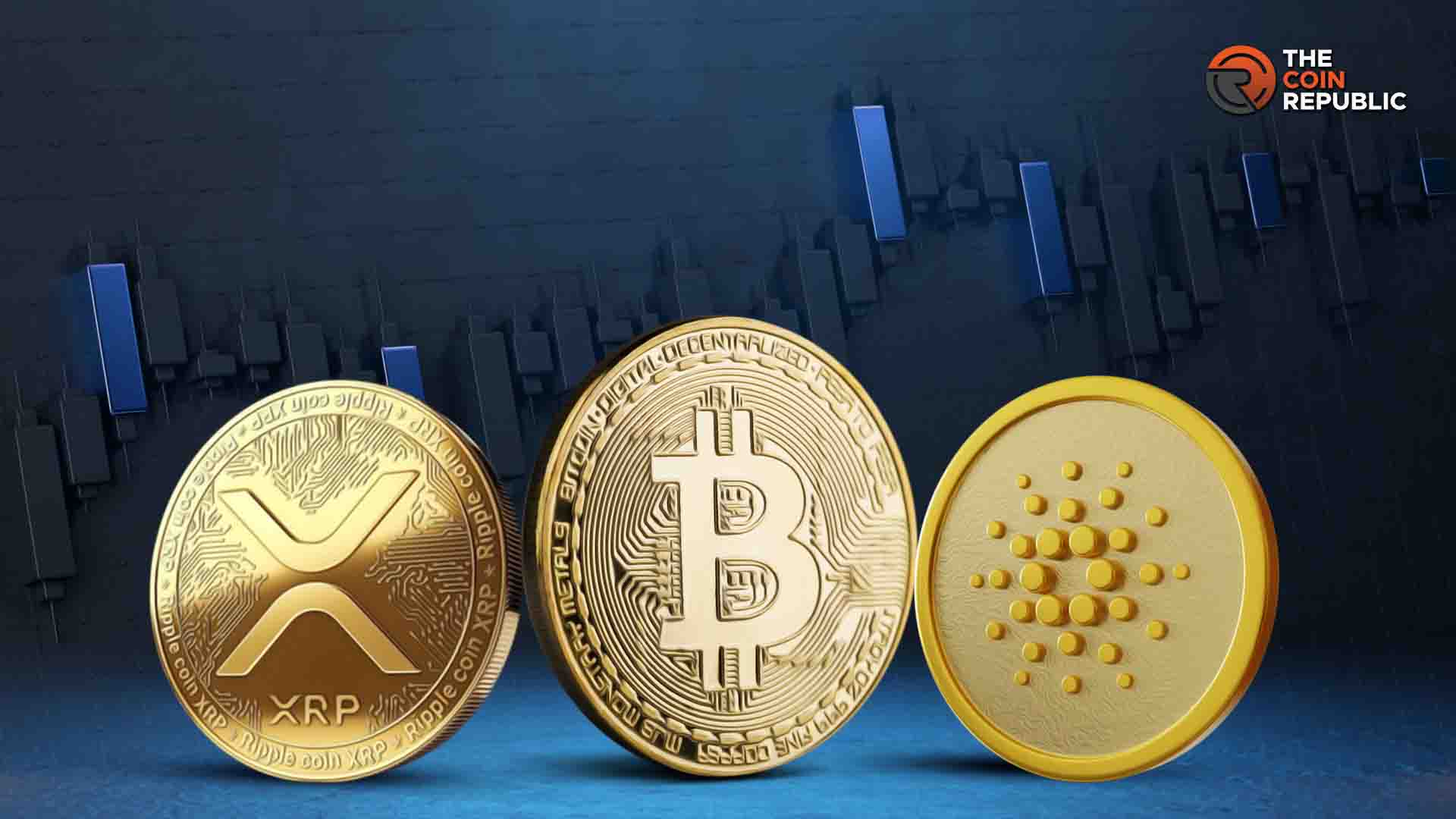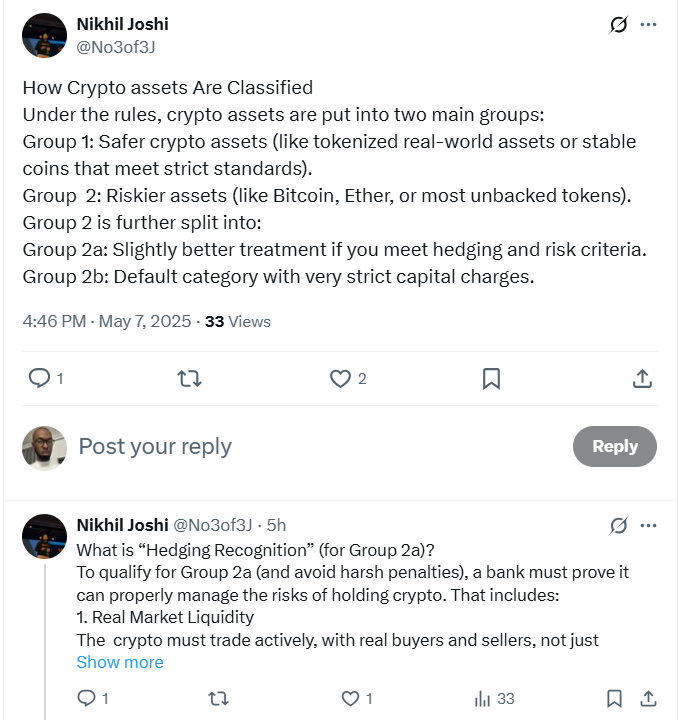Basel Committee Tightens Crypto Rules—Here’s How Bitcoin, XRP, and Cardano Get Squeezed
Global banking regulators just dropped new crypto capital requirements—and surprise, they’re not rolling out the red carpet.
The Basel Hammer Falls
The Basel Committee’s latest guidance slaps banks with punitive risk weights for holding cryptoassets. Bitcoin’s 1,250% capital charge? That’s regulator-speak for ’we still don’t trust this thing.’
XRP and ADA Face Compliance Gauntlet
So-called ’stablecoins’ get slightly better treatment—if they pass stringent redemption tests. Good luck explaining that to your risk committee when the next stablecoin domino falls.
The Silver Lining Playbook
Buried in the fine print: Proof-of-stake assets like Cardano might dodge the worst capital hits. Because nothing says ’financial stability’ like trusting validators with skin in the game.
One thing’s clear—while banks fiddle with spreadsheets, crypto keeps cutting through red tape like a hot knife through bureaucratic butter.

The Basel Crypto standard is again in the spotlight on social media X as conversations around global digital assets regulation are shaping up.
The conversation started with crypto enthusiast and EMURGO Chief Operating Officer (COO) Nikhil Joshi. He tagged his post on X as “Why Basel Crypto Rules Matter in Southeast Asia.”
Basel Committee Crypto Guidance
The Basel Committee on Banking Supervision has released rules that tell banks how to handle their direct exposure to cryptocurrencies like Bitcoin (BTC), Ethereum (ETH), XRP, and Cardano (ADA).
This rule, dubbed the Basel Crypto Standard, was first revised and amended on July 17, 2024. However, according to Joshi’s post on X, it will become effective this year.
He also pointed out the growing adoption of the rules amongst regulators worldwide.
Banks must consider the characteristics of digital assets and categorize them based on these features.
The first group, which includes assets that meet specific conditions, will receive more favorable capital treatment than the second.

This is because assets in Group 2 are perceived as “higher risk” tokens, and those in Group 1 are perceived as safer assets.
Per Joshi’s post, tokenized real-world assets (RWAs) or stablecoins are examples of assets in Group 1.
BTC, ETH, and “most unbacked tokens ” are the riskier assets in Group 2, although they can be considered slightly better if they meet hedging and risk criteria.
For more context on the specific conditions of assets in Group 1, they should be tokenized traditional assets or have an effective stabilization mechanism linked to a traditional asset.
They must also have clear, legally enforceable rights and obligations and sufficient risk mitigation mechanisms.
Growing Adoption and Ties to Top Digital Currencies
In Asia, particularly in Singapore, where crypto innovation has seen vast acceptance, regulators are beginning to favor this Basel rule.
The Monetary Authority of Singapore (MAS), the nation’s Central Bank, is taking crucial steps to ensure that banks and crypto entities in the region are aligned with these rules.
It is only a matter of time before regulators in Malaysia, Indonesia, Thailand, and the Philippines follow suit.
This expansion hinges on the crypto industry’s growth in these countries.
Invariably, the mainstream adoption of the Basel rule may negatively impact the performance of BTC and ETH Exchange-Traded Funds (ETFs).
Since issuers may need to meet the laid-down tokenization standard, achieving it might become too tedious in the region.
Also, it may alter how stablecoins and tokenized assets are offered and held in the region.
Crypto Regulatory Trends and Expectations
Globally, regulators are moving to implement a robust regulatory framework for the burgeoning crypto sector.
While some of these rules have been quite lenient, especially after Donald Trump assumed office, others are unfavorable.
However, things are changing as regulatory bodies like the DOJ have dismantled their crypto enforcement units.
A few months ago, SEC Commissioner Hester Peirce called for clearer crypto regulation in the country.
The commissioner hammered on “Operation Chokepoint 2.0” during an interview, pointing out its adverse effects on the financial system.
Operation Chokepoint 2.0 is touted as a government initiative designed to debank crypto firms.
Though believed to be an old practice, American cryptocurrency exchange Coinbase claims it is purportedly still happening in the emergent crypto industry.
In the coming months, the crypto landscape is expected to improve significantly, possibly to the point of getting several altcoin ETF filings approved by the SEC.

